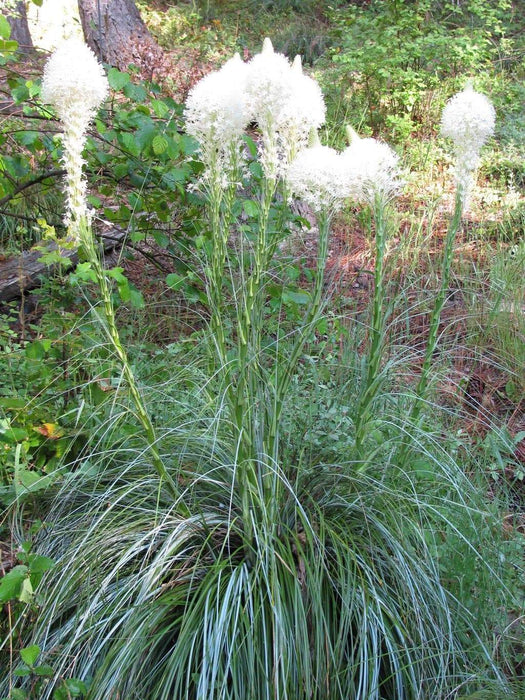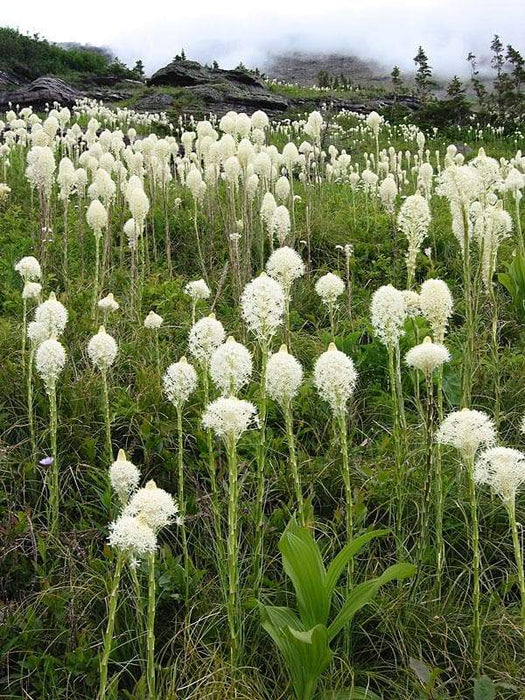
Beargrass Seed,Indian basket grass- Native Ornamental Grass
Most orders are processed by the next day
Select your desired size and/or color from the available options.
Seeds per Ounce: 16,000
Bear grass, a common name for Xerophyllum tenax, comes from observations that bears like to eat the young fleshy stems, although many other species use it for food or cover: from bees and beetles to rodents and elk. Though not a true grass, other common names include Indian basket grass, squaw grass, deer grass, elk grass, and soap grass.
The plant is native to Montana, but can also be found in subalpine meadows and coastal mountains throughout the Pacific Northwest, extending from British Columbia to northern California and eastward to Alberta and northwestern Wyoming.
Beargrass can grow up to five feet in height with long and wiry, grass-like basal leaves at the base of the stalk and a cluster of small, dense white flowers at the top. While bears do not eat the plant, they will use leaves as denning material. Sheep, deer, elk, and goats are known to eat beargrass.
A common myth states that beargrass only blooms every seven years. In reality, the plant flowers whenever conditions are appropriate. A single plant may have numerous basal rosettes on a common root system. Each rosette will bloom only once
Sowing: Direct sow in late fall, planting the bear grass seed just below the surface of the soil. For spring planting, mix the seeds with moist sand and store in the refrigerator for 14-16 weeks before planting. Keep the soil lightly moist until germination.
Growing: Seedlings must have well-drained soil that is allowed to dry out between waterings. This plant grows best in rocky, well-draining soil but also tolerates sandy or poor soil. Young plants may eventually grow from rhizomes. Blooming may occur irregularly every few years.
Harvesting: These blossoms do not perform well as cut flowers, and are best enjoyed outdoors.
Seed Saving: At the end of the flowering season, pods will develop that eventually turn tan and split open to reveal the ripe seed. Shake the open pods over a container to remove the seed. Store bear grass seed in a cool, dry place.Common Names: Squaw Grass, Soap Grass, Indian Basket Grass
Latin Name: Xerophyllum tenax
Species Origin: US Native Wildflower
Type: Native Wildflowers
Life Cycle: Perennial
USDA Zones: 3-10
US Regions: California, Mountain
LET OUR CUSTOMER SPEAK FOR US

![[Seeds] - Caribbeangardenseed](http://caribbeangardenseed.com/cdn/shop/files/gift-card-gift-card-1_1024x1024_dfa857db-9150-4315-a362-7f0bb3fb9c47_60x28.png?v=1703978838)




